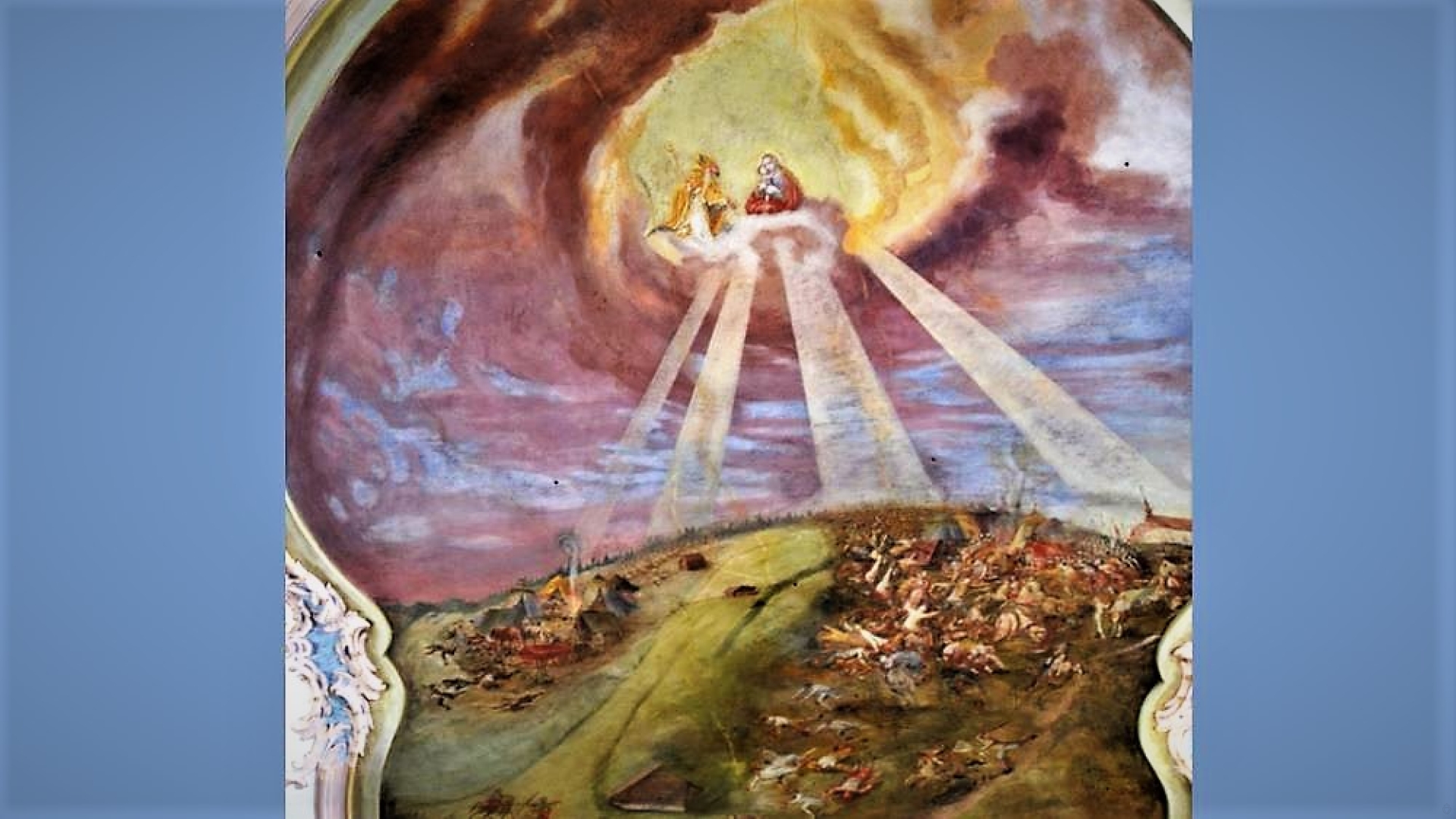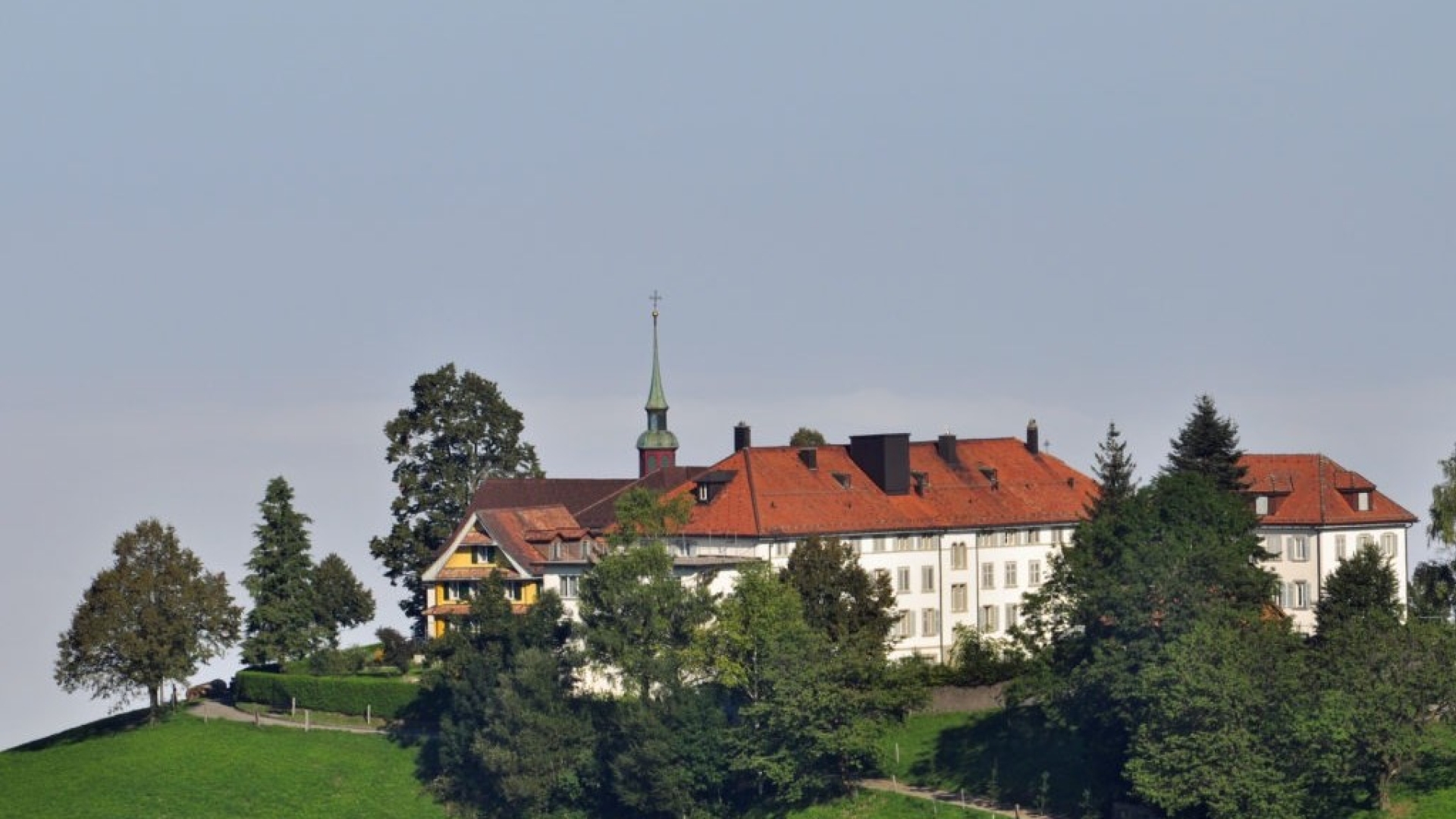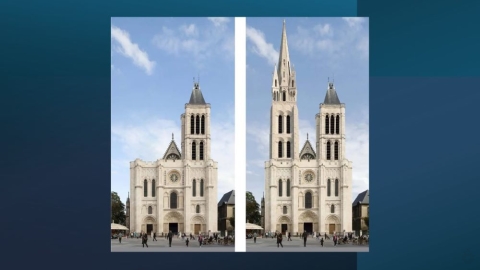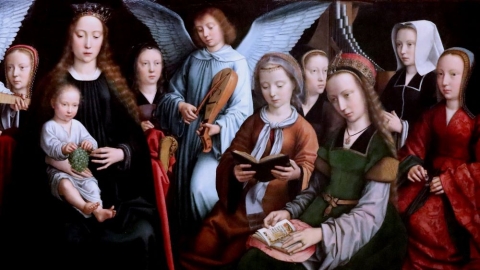Mary Help of Christians at the Gubel: the Virgin Protector of the Faith

Scene of the battle of Gubel, depicted on the ceiling of the convent chapel
The history of the Church is strewn with celestial interventions intended to protect the faith and the Catholic states. The intervention of the Blessed Virgin during the battle of Gubel – in the canton of Zug, in Switzerland – is a fine example.
Historical circumstances: the expansion of the Reformation in Switzerland
After the birth of the Reformation, preached by Martin Luther, the Protestant heresy spread in various countries through the preaching of reformers who tried to capture the benevolence of secular power, as in Germany or Switzerland.
Ulrich Zwingli (1484-1531) played this role in Zurich. He had been lieutenant priest of the Grossmünster in Zurich since the end of 1518. His heretical doctrine was opposed to the entire heritage of the faith. He refused the commandment of fasting, then the celibacy of priests; he then rejected ecclesiastical authority and had his doctrine officially recognized by the Great Council of Zurich.
He had the Mass and pious images abolished before obtaining the abolition of convents. He then tried to extend Protestantism to the other cantons. In 1529, Zurich declared war on the Catholic cantons of Lucerne, Uri, Schwyz, Unterwalden, and Zug, united in the Christian Alliance.
The Battle of Gubel
In May 1531, the canton of Bern, united with Zurich, imposed a grain embargo on the Catholic cantons which engendered a shortage. But Catholics were for the first time, comforted by the apparition of the Virgin Mary on the Wesemlin in Lucerne, on the feast of Pentecost 1531.
On October 9, 1531, the Christian Alliance entered the campaign. On October 11, 1531, the Virgin Mary appeared for the first time to encourage the Catholic party. Uran captain Jauch led the attack near Kappel. Zwingli and many of his followers died in battle.
Zurich then sent those who were able to bear arms. This band plundered the Catholic communities and desecrated the churches. On the evening of October 23, they camped in front of the Fürschwand.
A new apparition of Our Lady Help of Christians came to encourage the defenders of the faith. Led by Captain Christian Iten, they advanced to Gubel. After praying, they attacked a far superior enemy by night and defeated them, inflicting heavy casualties.
Even if the Battle of Gubel did not lead to definitive victory, it is of great importance for the continuation of the armed conflicts between Catholics and Reformed in Switzerland. Thus, by this victory, large areas of the Confederation were preserved from Protestant infection.
Church and convent of Maria Hilf in Gubel
The construction of the memorial chapel began in 1555. It was consecrated on October 23, 1559 “to Almighty God, to His blessed mother Mary, to the holy bishop Severin, and to all the heavenly host in praise and glory for the gracious, miraculous, and courageous victory won for the salvation and preservation of the true Catholic and Christian faith and of the beloved country.”
The miraculous intervention of the Virgin Mary during the battle is represented on the ceiling of the chapel. The image of Mary Help of Christians on the high altar is a free copy of the image of Mary Help of Christians from Innsbruck, painted by Lukas Cranach in 1517.
Maria Hilf Gubel Monastery
The Maria Hilf Gubel convent in Menzingen, canton of Zug, was founded in 1846 near the Maria Hilf memorial church. In 1851, the first three Capuchin Sisters, consecrated to perpetual adoration, made their profession.

The Maria Hilf Convent in Gubel
(Source: kloster-gubel.ch/Historical Dictionary of Switzerland – FSSPX.News)
Illustration 2 : © kloster-gubel.ch





